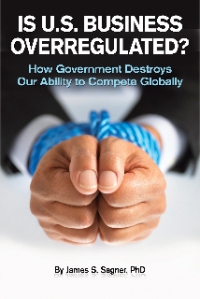 Our recent blog discussed the credit freeze being experienced in the current financial crisis, which can only be thawed by coordinated actions of the U.S. Treasury, Congress and the President, and the world’s central banks to bring confidence and liquidity back to the markets. Many of the necessary steps have been taken, and there are few additional major actions that should be required to restore some elements of which President Warren Harding called “normalcy” during his 1920 campaign. This blog focuses on valuation and the failed concept of mark-to-market accounting.
Our recent blog discussed the credit freeze being experienced in the current financial crisis, which can only be thawed by coordinated actions of the U.S. Treasury, Congress and the President, and the world’s central banks to bring confidence and liquidity back to the markets. Many of the necessary steps have been taken, and there are few additional major actions that should be required to restore some elements of which President Warren Harding called “normalcy” during his 1920 campaign. This blog focuses on valuation and the failed concept of mark-to-market accounting.
Banks are required to mark-to-market most financial assets other than loans. The practice of marking-to-market (or fair-value accounting) began with commodities dealers who accepted nominal amounts of margin (often as little as 5 or 6%) to hold futures contracts for clients. Each night that day’s settlement prices from the exchanges were used to revalue positions, so that margin calls could be made the next morning if the value of holdings had deteriorated and more cash was required. The idea was extended to bank investments in FAS 157 issued by the Financial Accounting Standards Board (FASB), taking effect after November 15, 2007. This re-pricing works when there is a deep and liquid market, and willing buyers and sellers can clear the market based on normal conditions of supply and demand. The concept does not work when the market is illiquid and/or when there are insufficient numbers of buyers and sellers.
We are going through a period of panic selling and sharply falling prices for certain assets, and mark-to-market is inappropriate in these conditions. The alternative is to use discount cash flow valuations of assets, bringing the expected future stream of interest payments and the repayment of principal back to present value. The unknown is whether the issuer can reasonably be expected to honor its debt contract, that is, will those interest and principal amounts be paid or has the quality of its assets or earnings been so affected that there is a permanent deterioration in its financial position? If so, the asset would be written down to reflect that change. What a radical idea – recognizing losses (or gains) when the investment has clearly lost value or when it is actually sold!
The SEC and FASB issued new guidelines on fair-value accounting just about the same moment that Congress was debating the $700 billion Emergency Economic Stabilization Act of 2008 (EESA), Public Law 110-343, October 3, 2008. The new rules permit the designation of “distressed” to certain investments so that less emphasis is placed on market prices. The EESA instructs the SEC to investigate whether mark-to-market rules deepened the problems in the credit markets and to suspend the rules if appropriate.
The SEC should instruct FASB to abolish fair-value accounting once and for all. Instead, banks should treat investments in the following manner:
- Model the value based on discounted cash flow projections of the present value of interest and principal payments.
- If permanently distressed, write down the assets as appropriate, based on reduced or omitted interest and/or principal payments.
- Subject all asset write downs and valuation to external auditor reviews.
- Further subject all asset write downs to bank examiner reviews.
_uacct = “UA-4404037-1”;
urchinTracker();
Filed under: Uncategorized | Tagged: commodoties, credit freeze, Emergency Economic Stabilization Act of 2008, fair-value accounting, FASB, liquidity, margin calls, mark-to-market accounting, panic selling, SEC, U.S. Treasury, Ward Harding | Leave a comment »


